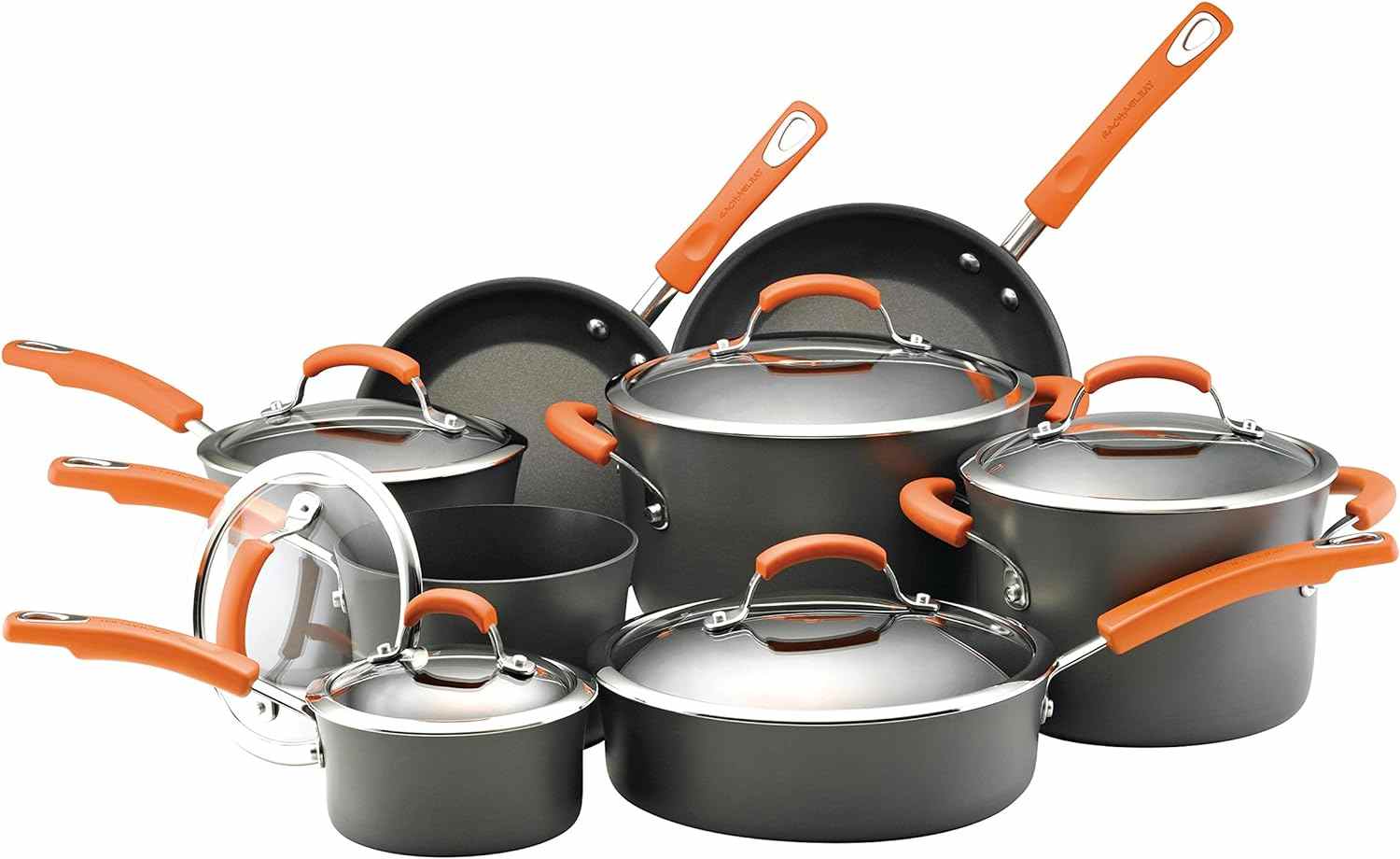• Stainless Steel
Stainless Steel Vs Nonstick Cookware – 5 Tips On How To Choose

Reviewed by Trinity Anderson
Last Updated January 2024
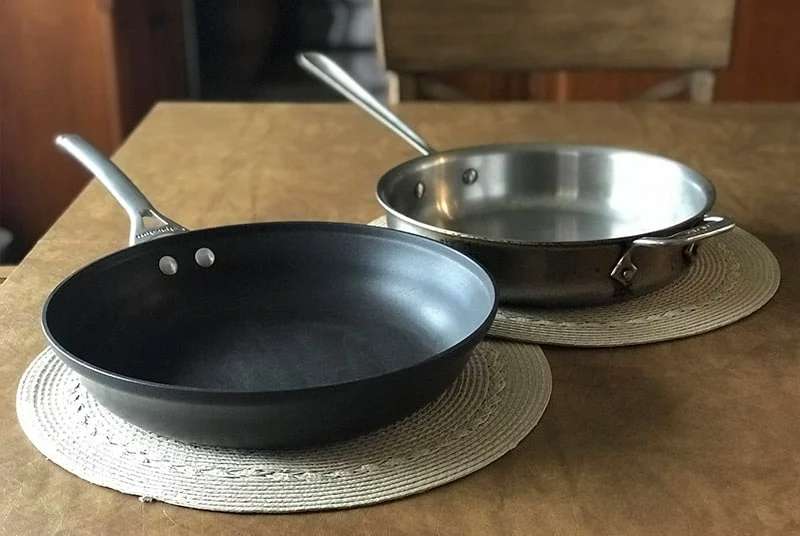
If you're currently in the process of shopping for new cookware and find yourself struggling to decide between stainless steel and nonstick options, I have a simple solution for you: choose both!
I understand that this may not be the answer you were hoping for, but allow me to explain my reasoning.
I believe that there is a place and a need for both types of cookware in your kitchen, and it doesn't have to be an either/or decision. Each type has its own unique advantages and can be used for different cooking purposes.
That being said, I want to provide you with a comprehensive framework to help you make the best choice. When it comes to deciding between stainless steel and nonstick cookware, consider factors such as your cooking preferences, the types of dishes you frequently prepare, and your overall cooking style.
By taking these factors into account, you can make an informed decision that suits your specific needs and ensures that you have the right cookware for every culinary task.
The decision depends on the following 5 points:
- What you are cooking
- Your cooking personality
- Pros and Cons of each
- How safe is each of them
- Your personal preference
Let’s dig deeper into each of these.
1. What you are cooking
The type of cookware you choose, whether it's stainless steel or nonstick, can greatly impact your cooking experience. Different types of cookware are better suited for specific cooking methods and certain types of food.
For instance, if you frequently sear food on high heat or enjoy deglazing to release the flavorful caramelized bits from the bottom of the pan, stainless steel cookware may be the right choice for you. Nonstick cookware won't give you the same fond, or caramelized food residue, that can enhance the taste of your dishes.
Stainless steel cookware is also ideal if you prefer a crispy skin on meats like chicken or if you often prepare dishes that require stovetop-to-oven cooking. Additionally, if you enjoy frying or stir frying food, stainless steel cookware can provide the heat distribution and durability needed for these cooking methods.
It's important to note that cooking with stainless steel cookware often requires the use of sufficient butter or fat, as this helps prevent food from sticking to the surface. This is one of the secrets to successful cooking with stainless steel.
Ultimately, the decision between stainless steel and nonstick cookware depends on your cooking style and preferences. Consider the specific cooking methods and dishes you frequently prepare to determine which type of cookware will best suit your needs.
On the contrary, if you frequently prepare egg and egg-based dishes, whip up pancakes and crepes, handle delicate fish, or work with sticky cheese or cheese-based dishes, nonstick cookware might be the ideal choice for you.
Additionally, if you prefer to use minimal fat or butter in your cooking (although this may not be a significant factor given the availability of healthier oils and fats), and typically cook on low or medium-low heat, nonstick cookware could be a suitable option. It is important to note that these lists do not imply that there cannot be any overlap in the types of cooking you do, nor does it suggest that there is a single perfect pan.
However, they can assist you in narrowing down the most appropriate option based on your specific cooking requirements.
2. Your cooking personality
I have previously discussed this topic in my buyer guide on selecting cookware. It is important to note that everyone, including you and me, has a unique cooking personality. In an ideal world, there would be two distinct cooking personalities: those who cook out of passion and those who cook out of necessity.
However, in reality, most of us fall somewhere along a spectrum between these two extremes, incorporating elements of both in our cooking style. Therefore, it is crucial to consider your cooking personality when making decisions about cookware. The choice of cookware can greatly impact your cooking experience and the quality of your dishes.
If you have a passion for cooking, you are more likely to:
1. Be willing to invest in high-quality, premium cookware that is built to last a lifetime.
2. Be open to the learning curve that comes with using specific cookware materials, such as stainless steel.
3. Prioritize cookware that not only performs well but also adds aesthetic value to your kitchen. You take pride in displaying your cookware.
4. Dedicate time and effort to maintain your cookware, ensuring that even after months of use, it still looks brand new.
5. Hand wash your cookware after every use, avoiding the use of a dishwasher.
6. Ensure that your cookware does not compromise the authenticity of the food and eliminates any possibility of metal leaching into your dishes.
If these characteristics resonate with you, then you are undoubtedly someone who cooks out of love, and stainless steel cookware would be the perfect choice for you.
If you find yourself cooking out of necessity, it is likely that you would prefer cookware that is hassle-free, easy to maintain, and easy to clean. Additionally, you would prefer cookware that is dishwasher safe, as you do not enjoy spending time scrubbing pots and pans by hand. Convenience is important to you, which is why a nonstick cookware set would be ideal.
While some may consider nonstick cookware to be more suitable for amateurs, it is perfectly suited for individuals like yourself who prioritize convenience over professional-grade equipment. So, if you fall into the category of someone who cooks because they have to, nonstick cookware would be the perfect choice for you.
If you find yourself somewhere in the middle, don't worry. Many of us are neither avid cooks nor obligated to cook. Personally, I fall into the category of "cook because I have to." This means that I value convenience in my cooking experience. However, I have found that nonstick cookware, although convenient, requires a lot of maintenance. It's important not to scratch it, overheat it, and always wash it with a soft sponge. In my opinion, food just tastes better when cooked in stainless steel cookware, except for eggs and crepes, for which I still prefer a nonstick pan. Therefore, the perfect cookware for me is a high-quality stainless steel set, with a couple of nonstick pans for specific dishes.
If you're looking for cookware that caters to both "love-to-cook" and "have-to-cook" individuals, as well as those in between, I highly recommend Caraway Cookware. It is a top-notch cookware set that not only looks stylish but also performs exceptionally well in the kitchen. Moreover, it features a durable ceramic coating that makes cleaning up a breeze. Regardless of where you fall on the cooking spectrum, Caraway Cookware is an excellent choice. For more details, you can read my comprehensive review or purchase it here.
3. Pros and cons of each
Stainless steel cookware offers numerous advantages and disadvantages that should be taken into consideration.
Advantages and Disadvantages of stainless steel cookware
Advantages of stainless steel cookware:
1. Affordability and easy maintenance: Stainless steel cookware is generally inexpensive and easy to clean, making it a practical choice for many households.
2. Durability and aesthetic appeal: It is known for its strength and longevity, with a sleek and polished appearance that complements any kitchen decor.
3. Resistance to acidic foods: Stainless steel cookware exhibits high resistance to acidic foods, ensuring that the taste and quality of your dishes remain intact.
4. Scratch resistance and compatibility with metal utensils: It is resistant to scratches and can safely be used with metal utensils without causing damage.
5. Lightweight and easy handling: Stainless steel cookware is lightweight, making it convenient to handle and maneuver while cooking.
6. High-temperature tolerance: It can withstand high temperatures without any significant issues, allowing for versatile cooking methods.
7. Environmentally friendly: Stainless steel cookware is 100% recyclable, making it an eco-friendly choice for those concerned about sustainability.
8. Safety: It is generally considered one of the safest cookware materials available, ensuring that your food is prepared without any health risks.
9. Oven compatibility: Stainless steel cookware is generally oven safe, although this may depend on the materials used for handles and lids.
Disadvantages of stainless steel cookware:
1. Increased oil or butter usage: Cooking with stainless steel cookware often requires more oil or butter compared to nonstick cookware, and pre-soaking may be necessary for effective cleaning.
2. Uneven heat distribution: The thickness of the aluminum or copper core in stainless steel cookware can affect heat distribution, so it is advisable to choose a high-quality set to ensure even cooking.
3. Potential leaching of chromium: There is a possibility of chromium leaching into food from stainless steel cookware. While chromium is considered an essential nutrient, allergic reactions may occur in some individuals.
4. Nickel leaching: Small amounts of nickel may leach into food, especially when the steel surface is scratched or subjected to abrasive scouring. Although health agencies state that these amounts do not pose a health risk, individuals with nickel sensitivities may experience allergic reactions.
It is important to weigh these pros and cons when deciding on the type of cookware that best suits your needs and preferences.
Advantages and Disadvantages of Nonstick Cookware
Advantages of nonstick cookware:
1. Ideal for cooking foods like eggs, crepes, pancakes, cheese, and delicate fish.
2. Easy to clean up after use.
3. Requires minimal oil or fat, making it suitable for those prioritizing low-fat cooking.
Disadvantages of nonstick cookware:
1. Not suitable for searing or browning food.
2. Unable to deglaze the fond of cooked protein like stainless steel cookware.
3. Limited lifespan, typically lasting around 2-3 years.
4. Should be used on low to medium heat settings.
5. Not recommended for oven use, despite claims made by manufacturers.
6. Requires regular maintenance and care to prevent scratching or overheating of the nonstick coating.
7. Safety concerns with PTFE/Teflon type nonstick cookware, as it can release toxic fumes when overheated.
4. How safe is each of them?
This is perhaps the primary reason why many readers find themselves deliberating between stainless steel and nonstick cookware. It is not surprising, as there are numerous perceptions and misconceptions regarding the safety of different cookware materials.
Let's examine each of them.
Is nonstick cookware considered safe?
In short: Yes.
However, for a more comprehensive and accurate response, this question needs to be divided into three separate inquiries due to the existence of two types of nonstick coated pans - PTFE (Teflon) coated and ceramic coated. So, let's delve into it:
Is PTFE/Teflon coated cookware safe?
Teflon, on its own, is an inert plastic-like compound, and even if you accidentally consume a flaked-off piece, it will simply pass through your system.
Only when it is exposed to high temperatures, such as 500 degrees Fahrenheit, does Teflon begin to deteriorate and release fumes that have been found to be harmful to birds and can cause flu-like symptoms in humans.
In regular usage, pans are not typically heated to such extreme temperatures. However, it is important to remember that it is quite easy to unintentionally reach high temperatures with these pans. According to a test conducted by The Good Housekeeping Institute, an empty nonstick pan took less than 2 minutes to heat up to over 500°F. With oil, it took a staggering 2.5 minutes to reach 514°F.
In summary, yes, Teflon or PTFE is safe as long as you are cautious about not heating an empty pan or cooking at excessively high temperatures.
Is ceramic coated cookware safe?
Yes, ceramic coated cookware is safe to use. The coating is free from PTFE or PFOA, making it a popular choice for those seeking an alternative to Teflon. It is also heat stable, meaning that even if the pan is accidentally heated beyond 450°C (842°F), it will not break down or release any toxic fumes, unlike Teflon coated pans. This makes ceramic coated cookware safe for both humans and pets.
Is ceramic nonstick safer than Teflon?
At normal cooking temperatures below 500°F: No, ceramic nonstick is not inherently safer than Teflon. Both types of coatings are equally safe.
However, at temperatures above 500°F: Yes, ceramic nonstick is safer than Teflon. Teflon starts to break down and emit fumes at high temperatures, which can be harmful to the environment, birds, and can cause flu-like symptoms in humans. On the other hand, ceramic coating remains stable and does not emit any fumes, even if the pan is accidentally overheated.
For a more detailed comparison between ceramic and Teflon, you can refer to our article here.
Is stainless steel cookware safe?
Stainless steel cookware is generally considered to be one of the safest and most non-reactive materials for cookware. It is durable, low maintenance, and eliminates concerns about nonstick coatings disintegrating or releasing fumes.
However, it is important to note that stainless steel can leach small amounts of nickel and chromium into food, depending on the grade of stainless steel, cooking time, and cookware usage. For most people, the amount leached does not pose a risk hazard, according to Health Canada.
However, individuals who are sensitive to nickel (approximately 15-20% of the population) should opt for cookware that is free of nickel. If you fall into this category, we recommend checking out our list of 7 nickel-free cookware options.
If you specifically require a nickel-free stainless steel option, the best choice would be Homi Chef.
5. Your personal preference
Sometimes, it's necessary to disregard all the logical reasoning and simply follow your own preferences when choosing cookware. While stainless steel cookware may seem like a durable option that will last a long time, it may not be the best choice if your cooking skills are basic and you value convenience and easy cleanup. In such cases, nonstick cookware would be the better option for you.
Alternatively, you might share my preference for nonstick cookware due to its convenience and easy cleaning. However, you may also find it high maintenance as the nonstick coating can easily be damaged by scratching or overheating. Moreover, you might personally believe that food tastes better when cooked in a stainless steel pot, perhaps due to the sear or the fond it creates. Therefore, for someone like me, a combination of stainless steel cookware with a few nonstick fry pans for delicate foods would be the ideal choice.
In conclusion….
It is widely acknowledged that there is no such thing as a perfect pan. However, if you are still uncertain about whether to choose stainless steel or nonstick cookware, I have a few recommendations for you:
Recommendation #1: Opt for a high-quality stainless steel set and complement it with 1-2 nonstick fry pans.
Suggestion #1: Stainless steel + 1-2 nonstick fry pans
(This is actually my personal preference!)
Selecting a stainless steel set of excellent quality and incorporating a couple of nonstick fry pans is ideal for preparing delicate foods such as eggs, crepes, and pancakes.
Based on my own opinion and experience, I firmly believe that every home cook should possess at least one nonstick pan.
Now, can you transform a stainless steel pan into a nonstick one? Theoretically, yes, and it can be summarized in four words: hot pan, cold oil. You can find more information on this topic, but from my personal experience, although it may work for most cooking purposes, I have found that it simply does not yield the desired results when it comes to foods like crepes, pancakes, and eggs. Trust me on this, or even better, explore my three experiments on cooking eggs using three different nonstick alternative pans.
Best choice for stainless steel cookware: Made In cookware
Best choice for nonstick fry pan:
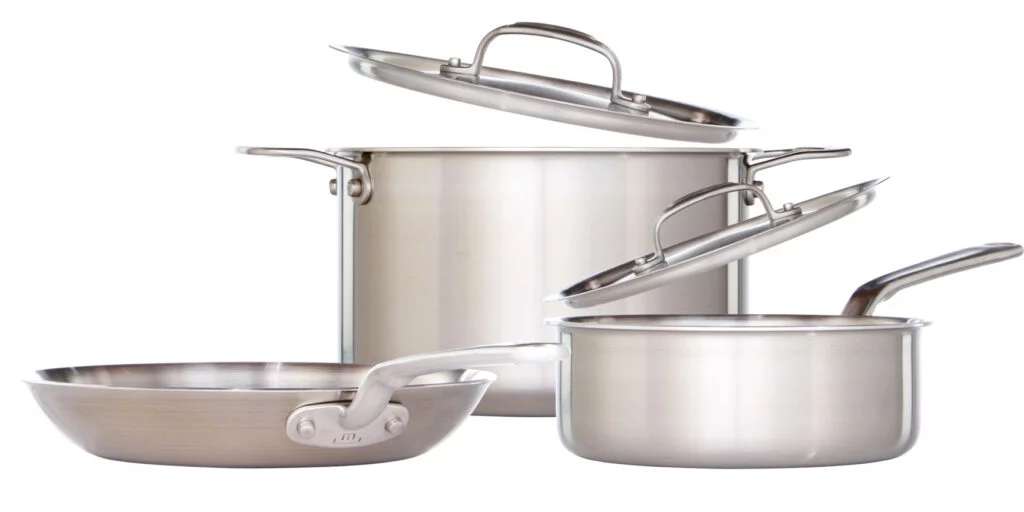
High quality (replace every 3+ years): Made In Cookware Nonstick Fry Pan
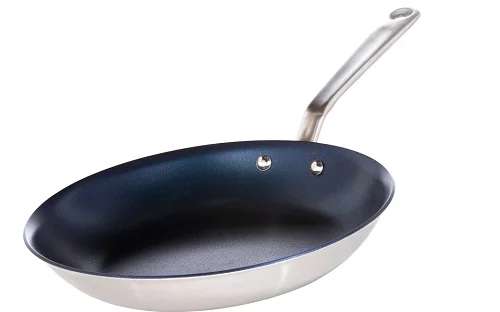
Mid range nonstick fry pan (replace every 2 years): Tefal Nonstick Fry pan
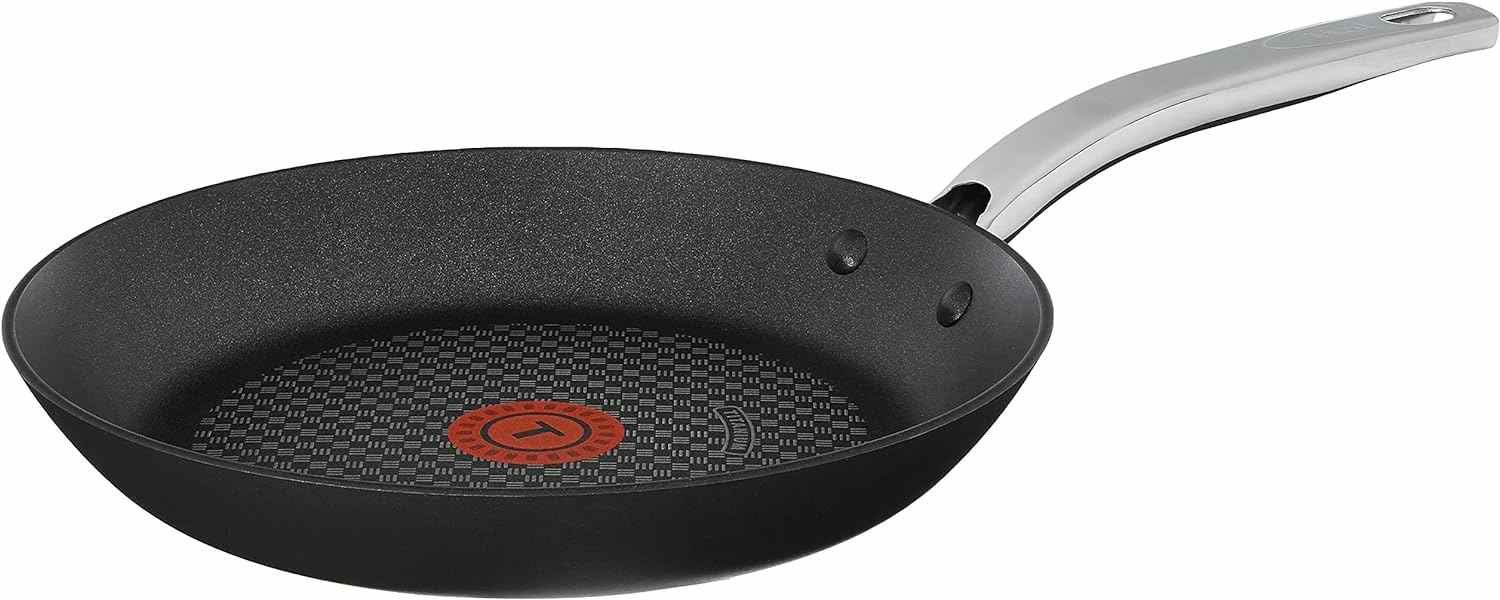
Suggestion # 2: Stainless steel with nonstick coating
Stainless steel cookware with a nonstick coating. This choice offers the perfect combination of durability and strength from stainless steel, efficient heat distribution from an encapsulated aluminum base, and the added convenience of a nonstick coating. Moreover, if you own an induction stove and prefer nonstick cookware, stainless steel with a nonstick coating is the ideal selection as it allows the pans to be compatible with induction cooking.
Best choice for stainless steel with nonstick coating: Farberware stainless steel nonstick cookware set.
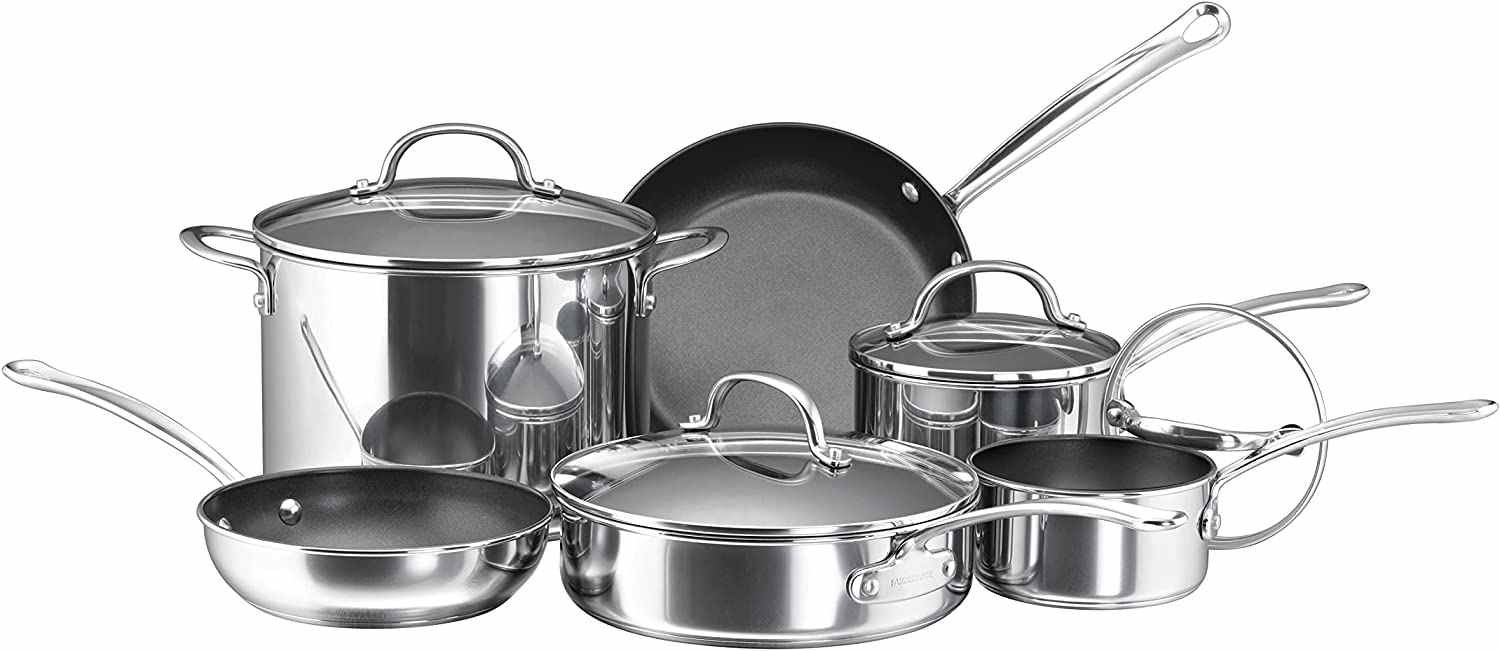
Suggestion # 3: High quality ceramic coated nonstick cookware
This option is perfect for individuals who enjoy cooking as well as those who cook out of necessity. It is a foolproof choice that guarantees satisfaction. Additionally, it is an obvious choice for those who prefer to steer clear of cookware that contains PTFE.
Best choice for ceramic nonstick cookware: Caraway cookware
.jpg)
Caraway has recently emerged as a fresh contender in the cookware industry, providing top-notch ceramic cookware that is both premium and of superior quality, while also being completely toxin-free.
Suggestion #4: Hard anodized aluminum nonstick cookware
This option is ideal if you simply want to proceed and make a choice. Additionally, it is budget-friendly and offers exceptional food release, making the cooking process effortless.
Best choice for hard anodized aluminum nonstick cookware: Rachael Ray Brights Cookware